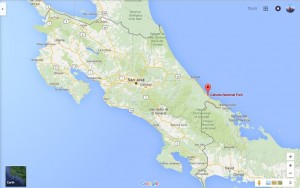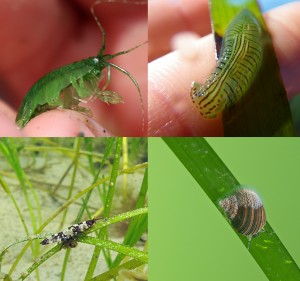
Most common species: On land, the most common is orchids, while epiphytes grow on the coral reefs as well, mostly algae and bacteria. According to a paper from Revista de Biología Tropical, a total of 26 species of microalgae were found on just one species of seagrass off the coast of Cahuita.
Functions in this climate: On land, they serve the function of directing precipitation to the host trees. In the sea, however, some epiphytic bacteria can extract nitrogen from the surrounding environment and make it available to other, larger animals. Also, the epiphytes can serve as food for some “mesograzers”, like snails or lobsters, which in turn “cleans: the seagrass and promotes more growth.

Specializations in this climate: The co-inhabitance of epiphytic algae and bacteria, as well as the the extremely diverse collection of species of seagrasses, corals, and invertebrates, creates an interwoven web of producers and consumers throughout the reefs around Cahuita.
Impacts on environment around them: While most of the impacts are positive, the overabundance of mesograzers feeding on the epiphytes can leave accumulations of mucus, which can then block sunlight getting to the seagrasses. The positive impact is that epiphytes promote more growth to a coral reef ecosystem by placing building blocks for the food web.
Future in this climate: With global warming causing major issues for coral, seagrasses, and other plants on coral reefs, these epiphytic organisms are also suffering. Other disturbances, such as waves and storms or the runoff of fertilizers or pollution, are causing seagrass loss, up to the level of 1.5% per year. The increased loss of habitat for the epiphytes will lead to their disappearance as well.
References:
http://ocean.si.edu/seagrass-and-seagrass-beds
http://www.redalyc.org/pdf/449/44919934014.pdf
